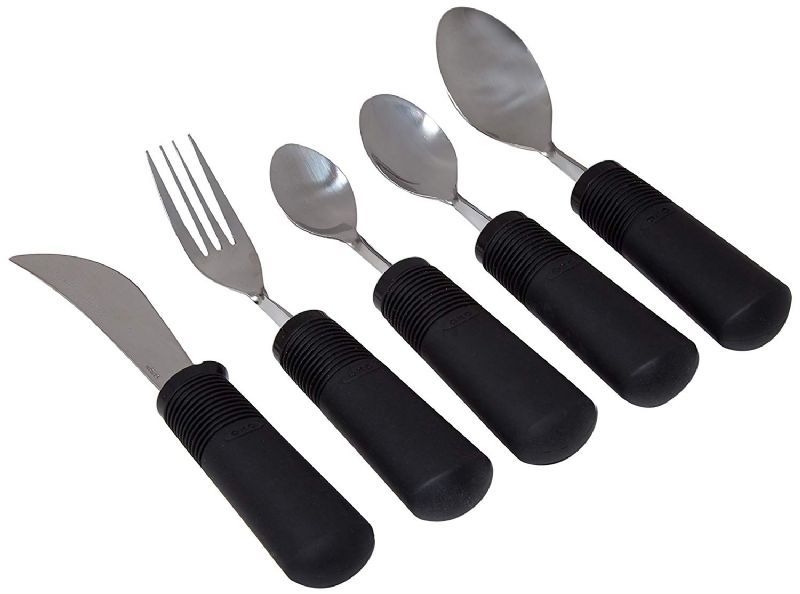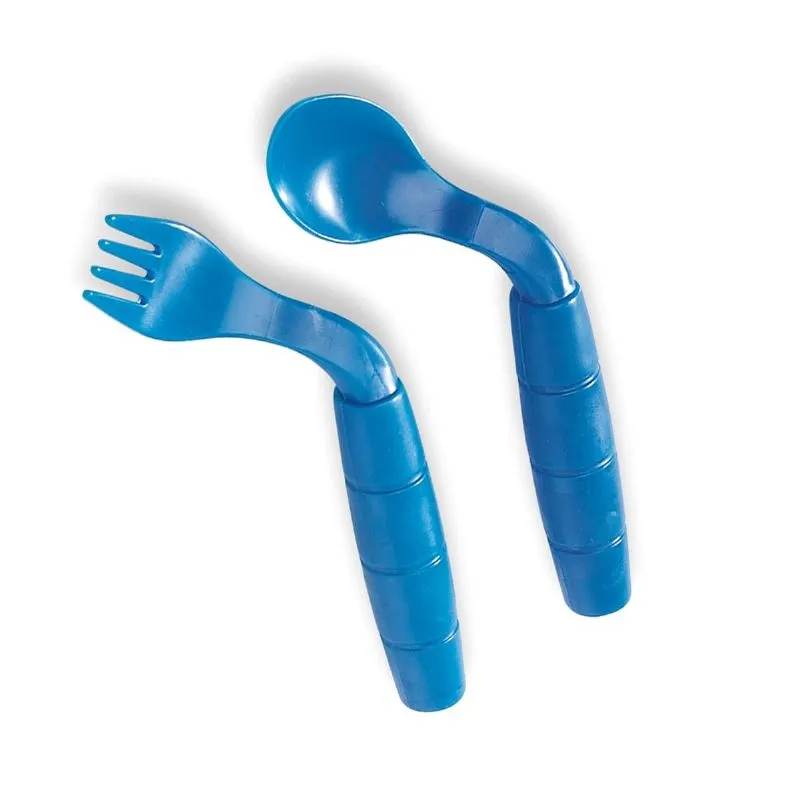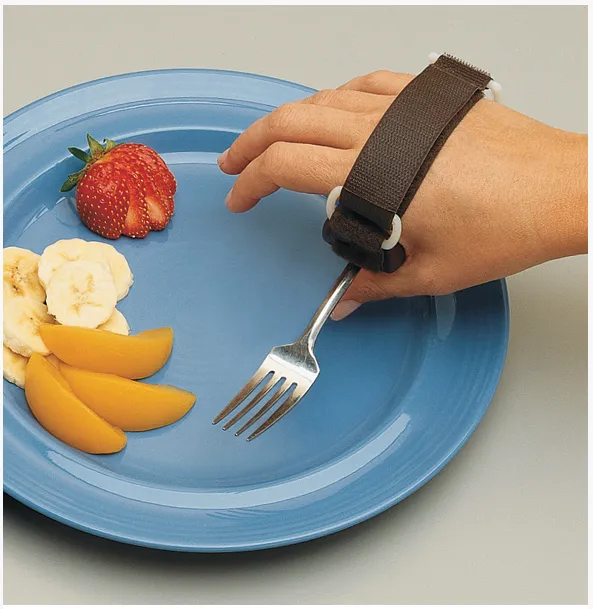 Written by Hulet Smith, OT
Written by Hulet Smith, OT
Eating is a seemingly simple act we often take for granted, but for those who experience difficulties in feeding themselves because of certain conditions, such as age-related weakness, arthritis, tremors, and other disabilities, eating can seem like an insurmountable challenge.
People who struggle with eating utensils often also develop negative side effects including weight loss, decreased appetite, self-isolation, and depression.
They may eat less than they require to meet their daily needs for nutrition, or may no longer be able to eat foods they used to enjoy.
The frustration and potential embarrassment can even stop some people from dining out and socializing with others, which can lead to low self-esteem, isolation, and depression.
Thankfully, there are a wide variety of highly effective aids to help people eat independently despite challenges with standard utensils.
Adaptive eating utensils and accessories come in a variety of different models and styles to suit the unique needs of any user.
These specialized adaptive devices for easier eating include utensils that are curved, bendable, able to swivel, feature built-up handles, or are weighted.
Holders, cuffs, and straps help utensils to stay in place on the hand and wrist, and rocker knives enable users to cut food safely and more easily with less pressure required.
Regardless of the format, all adaptive eating utensils are designed to improve the user’s ability to manipulate the food onto the utensil, and then bring that food to the mouth.
They assist children and adults with a variety of special needs and disabilities including both tremors and manual or upper body weakness, and help them to better control the utensil and food, enhancing their confidence and sense of independence.
The introduction of adaptive utensils and other feeding aids can make a significant difference in the lives of those who struggle with utensil challenges.
Let’s take a closer look at a few of the most popular adaptive utensils and accessories and what you need to know to make the best choices for your loved ones.

Utensils with a larger grip or handle make grasping easier, and are ideal for users with weakness, tremors, and decreased dexterity.
The wider area puts less stress on the small joints of the hand, and doesn’t require as much grip strength.
Weighted utensils aid in stabilizing tremors resulting from conditions like Parkinson’s disease, providing necessary proprioceptive feedback for the tremors symptomatic of these sorts of conditions.
Larger, built-up handles are available to add to your existing forks, knives, and spoons, or can be purchased as pre-configured utensils.
They come in a range of weights and sizes to better fulfill the individual requirements of each unique user.
The built-up, weighted utensils often offer a selection of various surfaces for the grip, such as a smooth texture for comfort, contoured shape to better fit the hand, or a textured surface that improves grip and ease of manipulation.

Although they all work a little differently, adaptive curved, swiveling, and bendable utensils are ideal for those who have a variety of fine motor skill challenges and subsequently struggle with hand-to-mouth feeding.
These types of assistive eating utensils are designed to help users keep food on the fork or spoon even when turned at any angle.
Ideal for those with limited or no muscle control, and/or minimal manual range of motion, these types of utensils make it easier to deliver the food to the mouth without it spilling off the side.
They reduce any need for twisting force from the wrist, and often come in left or right-hand designations for correct support. They can be used by anyone from children to the elderly and are perfect for dining in any setting.

In addition to adaptive utensils, there are a variety of cuffs, holders, and straps designed to help users more easily feed themselves.
Also known as ‘universal cuffs’ because they can be used to hold other items like toothbrushes or pens, they’re generally configured as adjustable bands or straps that fit across the palm of the hand, with a small pocket for the utensil handle on the palmar surface of the cuff. This provides a secure and stable position for the utensil.
Universal cuffs come in various sizes and configurations, and are often helpful for users with Parkinson’s disease, arthritis, those recovering from a stroke, and anyone else facing challenges with grasping and holding small objects.
They can be great for people still looking to use their traditional utensils, or for those dining out who may not want to bring their own adaptive fork and spoon.
The use of adaptive eating utensils helps a multitude of people overcome their challenges with this essential activity every day.
Although there may be a bit of a learning curve at first with some of these devices, correctly-chosen assistive utensils can make a dramatic difference for users struggling with eating disabilities.
The following are just a few of the many conditions that can benefit from the use of adaptive eating utensils and other assistive equipment:
If you or a loved one is experiencing difficulties with properly manipulating utensils and other small objects, it is also recommended that you consult with your doctor or an Occupational Therapist to determine the cause, and what types of adaptive equipment are going to be best to address it.
The use of adaptive utensils is just one way to aid in eating participation. There is also an array of adaptive tableware and adaptive glassware to make eating and drinking even easier for people with these challenges.

Co-founder/CEO of Rehabmart, Pediatric Occupational Therapist, husband, and father. Passionate about connecting special needs kids with superb nutrition, sensory integration, and complementary health strategies. Excited about Rehabmart's mission to become the premier online educational platform which empowers caregivers by spotlighting innovative devices and interventions to achieve optimal patient response and recovery.